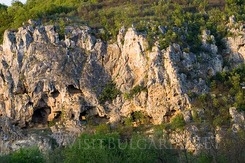Over one billion euro has been invested in the wellness and spa industry in Bulgaria over the past more...
| Search | Hotels / Accommodation | Vacations | Tours & Trips | Rent A Car | Transport | Flights | Conferences | Press Centre | Yachting |
- Hotels & Accommodation in Rousse




- Best Western Bistra and Galina Hotel
- Cosmopolitan Hotel



- Anna Palace hotel
- Danube Plaza Hotel

- Nearby hotels

- The Black Stork Complex
- Rousse Guide
- Early booking in Rousse
- All inclusive in Rousse
- Last minute in Rousse
- Hotels in Rousse
- Apartments in Rousse
- Villas in Rousse
- Rural houses in Rousse
- Vacations in Rousse
- Transport To Rousse
- Tours in Rousse
- Conferences in Rousse
- Articles on Rousse
- News From Rousse
- Roussenski Lom
- Basarbovo Monastery
- Ivanovo Monastery
- Cherven Medieval Town
- Holidays in Bulgaria
- All inclusive
- Beach
- Birdwatching
- Golf
- Health
- History
- Hunting
- Monasteries/ Religious
- Mountain biking
- Prom
- Rural
- Ski
- Spa & Wellness
- Trekking
- Water sports
- Weekend breaks
- Wine
- Conference
- Children Holidays
- Yachting
- Events
- Type of accommodation
- Hotels
- Apartments
- Villas
- Rural houses
- Destinations
- Aheloy
- Ahtopol
- Albena
- Apriltsi
- Arbanassi
- Asparuhovo
- Assenovgrad
- Bachkovo Monastery
- Balchik
- Bankya
- Bansko
- Banya (Karlovo)
- Banya (Razlog)
- Batak
- Beklemeto
- Belchin Bani
- Beli Iskar
- Belogradchik
- Berkovitsa
- Blagoevgrad
- Bodrost
- Bojichen
- Borovets
- Botevgrad
- Bourgas
- Bozhentsi
- Bratsigovo
- Brestovitsa
- Buzludja
- Byala
- Chepelare
- Cherepish Monastery
- Chernomorets
- Chiflik
- Devin
- Dimitrovgrad
- Dobarsko
- Dobrich
- Dobrinishte
- Dolna Banya
- Dospat
- Dryanovo
- Dupnitsa
- Dyuni
- Elena
- Elenite
- Elhovo
- Gabrovo
- Gela
- Golden Sands
- Gorna Oryahovitsa
- Gotse Delchev
- Govedartsi
- Grand Hotel Varna
- Harmanli
- Haskovo
- Haskovo Mineral Baths
- Hissarya
- Ivaylovgrad
- Kalofer
- Kamchia
- Kamen Bryag
- Kardjali
- Karlovo
- Kavarna
- Kazanlak
- Kiten
- Kom
- Koprivshtitsa
- Kosharitsa
- Kostenets
- Kostenkovtsi
- Kotel
- Kovatchevitsa
- Kranevo
- Kresna
- Kulinoto
- Kyustendil
- Lom
- Lovech
- Lozenets
- Lukovit
- Lyaskovets
- Madara
- Malko Tarnovo
- Malyovitsa
- Melnik
- Mezdra
- Momchilovtsi
- Montana
- Narechen Baths
- Near Golden Sands
- Nessebar
- Obzor
- Ognyanovo
- Osogovo
- Pamporovo
- Panagyurishte
- Panichishte
- Parshevitsa
- Pavel Banya
- Pavlikeni
- Pazardjik
- Pernik
- Petrich
- Pirdop
- Pleven
- Pliska
- Plovdiv
- Pomorie
- Pravets
- Preslav
- Primorsko
- Ravda
- Razgrad
- Razlog
- Ribaritsa
- Rila Monastery
- Riviera
- Rousse
- Rusalka
- Samokov
- Sandanski
- Sapareva Banya
- Semkovo
- Sevlievo
- Shabla
- Shipka
- Shipkovo
- Shiroka Laka
- Shkorpilovtsi
- Shoumen
- Silistra
- Sinemorets
- Sliven
- Smolyan
- Sofia
- Sopot
- Sozopol
- Srebarna
- St. Constantine & Elena
- Stara Zagora
- Starozagorski Baths
- Sunny Beach
- Sunny Day
- Sveti Vlas
- Svilengrad
- Svishtov
- Targovishte
- Teteven
- Tran
- Trigrad
- Troyan
- Tryavna
- Tsarevo
- Tsigov Chark
- Uzana
- Varna
- Varshets
- Veliko Tarnovo
- Velingrad
- Vidin
- Vitosha
- Voneshta Voda
- Vratsa
- Vratsata Gorge
- Yagoda
- Yakoruda
- Yambol
- Zlatitsa
- Zlatograd
- Bulgaria Guide
- General information
- Bulgarian Monasteries
- SPA Bulgaria
- The Black sea
- History
- Geography
- Maps
- Weather
- Airports in Bulgaria
- Webcams
- Forums
- Mountains in Bulgaria
- The Balkan Mountain Range
- Rila Mountain
- Pirin Mountain
- The Rodope Mountain
- Vitosha Mountain
- Travel Arrangements
- Visit Bulgaria
- Visa Requierments
- Choose Destination
- Flights to Bulgaria
- Transport in Bulgaria
- Advice
- Currency
- Official Holidays
Subscribe to newsletters to receive our hottest offers:
| Home > Rousse > News |
Ivanovo rock churches
bnr.bg

In the valley of Russenski Lom, Northeastern Bulgaria, in the vicinity of the village of Ivanovo, stands a complex of churches, chapels, and monasteries carved in the rocks and developed in the course of many centuries. The complex is known as the Ivanovo Rock Churches – one of the nine Bulgarian monuments included in the UNESCO list of world culture and historical heritage.
The first hermits dug their cells in the rocks in the 12th century. The 14th century wall paintings are a proof of the highly developed mastery characteristic of the painting school of Bulgaria’s Medieval capital of Veliko Tarnovo.
The Ivanovo Rock Churches are situated some 22 kilometers south of the Danubean city of Russe. They represent a network of about 20 small rock churches, chapels and individual cells dug at a different height in the rocks of the Russenski Lom Canyon. Narrow paths of rock ladders and staircases link these premises. In the past the number of these churches was over 40, while the cells were more than 300, inhabited by monks many of whom were grammarians and men of letters. Christians in those days used to go there on something like a pilgrimage. Bulgarian kings and the nobility from the age of the Second Bulgarian Kingdom /that is, the 12-14 century/ used to send there stone-carvers for the making of new temples and icon painters to decorate them with frescoes. The churches at Ivanovo are part of the hundreds of Bulgarian medieval rock churches and monasteries that have turned in the 10-14 century period the valley of Russenski Lom and its tributaries into a renowned Orthodox Christian and literary center. Rain, earthquakes, ice and sun have destroyed a large part of the Ivanovo Rock Churches. The names of the remaining ones have been forgotten through the centuries and local people have given them different names like “God’s Gorge” for example, because through the opening of one of the churches people believed to see the image of Christ. Another place was called “The Letters” because of the preserved signs and inscriptions. One of the churches was called “The Berried one’, while another was – just the Church.
The main church of the Virgin Mary complex has been dug into the rock at an altitude of 38 meters from the base. It is entirely covered by frescoes of biblical and scenes and images. The Last Supper is one of them, as well as the Entrance in Jerusalem, St. John the Baptist, the Passions of Christ, the portraits of the Apostles; other saints and pictures of their lives. These world-renowned wall paintings from the 14th century are some of the top achievements of Medieval Bulgarian and Balkan art. Donors to the rock monasteries were Bulgarian kings Ivan Assen II /1218-1241/, Ivan Alexander /1331-1371/ and other families of the nobility, whose portraits have been painted on the church walls and are preserved to this day.
The chapel “God’s Gorge” is one of the most richly decorated with frescoes. A confession inscription on one of the walls reads that this is the place where Bulgarian King Georgi Terter /1279-1292/ took up monkshood and was buried after his death.
The life-story of Tarnovo Patriarch Yoakim I, who towards the end of his life withdrew as a hermit to those inaccessible rocks, makes it clear that together with some of his students he built the first rock church, which together with the other temples in the “Letters” locality form the large rock monastery called after St. Michael. The monastery was set up in the 13th century. According to chronicles from that time, King Ivan Assen II visited Patriarch Yoakim I in his rock seclusion and brought him as a gift enough gold for the building of a monastery church. Joakim had many followers who were sworn into silence – the so-called Hesychast Monks. There were about 80 of them living in the rocks and subsisting on roots, wild fruits and cereals. At that time Hesychasm – a religious teaching based on the elevation of the spiritual side of man through seclusion and introvertness, had become an official movement in Byzantium and Bulgaria. So in the 14th century the St. Michael became a center of Hesychasm.
The walls of the individual cells of the monks of those times show inscriptions of confessions and messages. Among them is the well-known inscription of Ivo the Grammarian from the 13th century, which reminds of the notes inscribes in the blank spaces of old Bulgarian manuscripts. The Ivanovo Rock Monasteries sanctuary continued functioning also in the early centuries of Turkish rule over Bulgaria, but gradually lost its importance as a spiritual center. In the 18th century the rock monastery once again became the place for worship. Today this unique in all of Europe cultural site, even though still hardly accessible, is visited by thousands of tourists and worshipers.

















